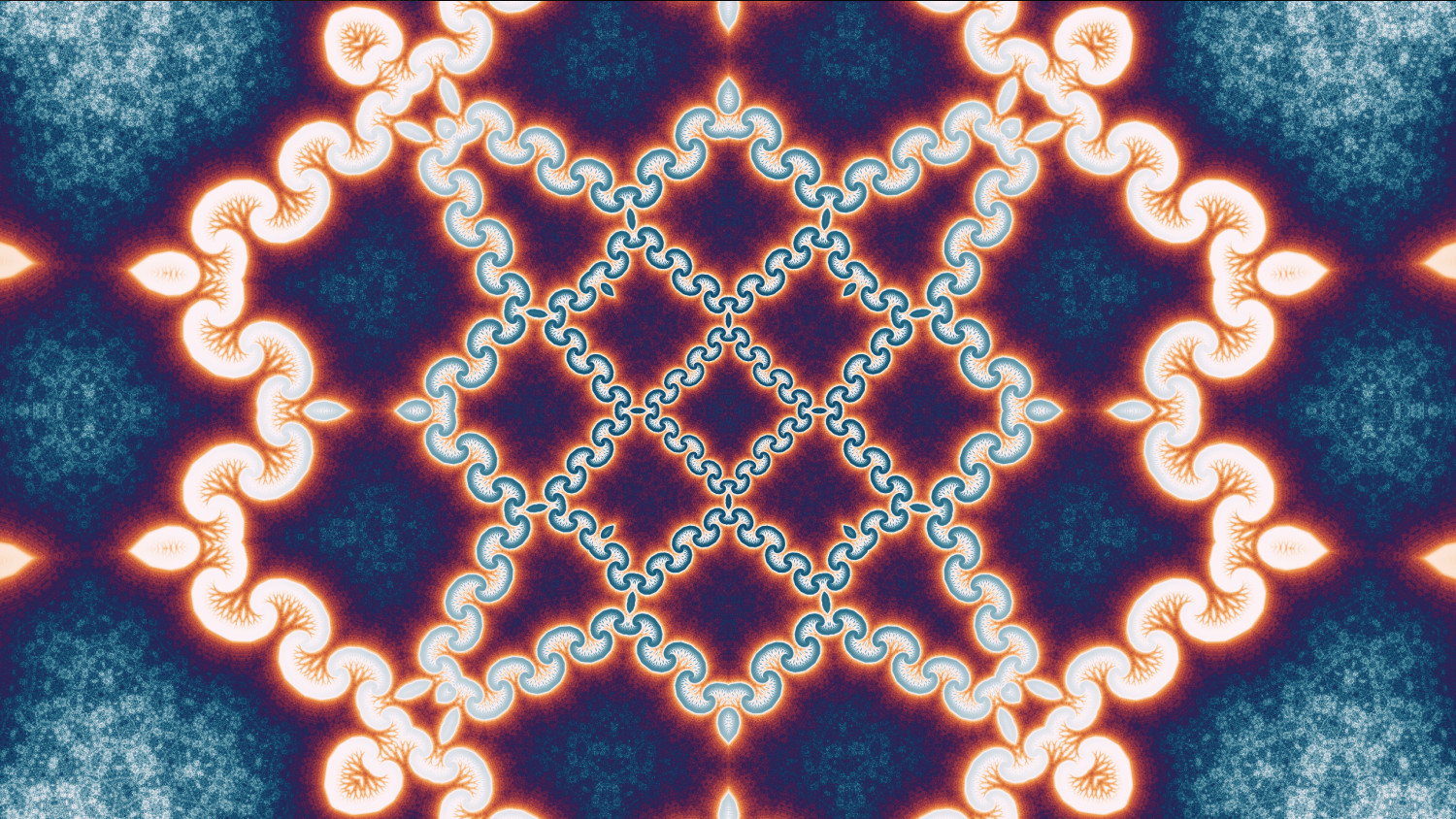I have postet once a distance algo for outside, now i try to realize a inside algo too.
I got the formula from a website but it doesn’t work.
I’m probably making a very stupid mistake that I just can’t see.
I can also provide code, but only in CP script language.
Has somebody a working distance algo for inside?
In some of my formulas I didn't put in a version parameter and I want to change the formula without breaking old fractals.
If I had included something like
int param version
caption = "Version"
default = 240330
visible = @version < 240330
endparam
then I could have used code like
if @version <= 240330
; old stuff
else
; new stuff
Dint
posted Aug 2 '19 at 12:29 am
I went through the documentation but I am not sure I am understanding correctly.
My question is pretty simple.
If I have a formula file
an Inside COloring file
and OUtside Coloring file
Can I pass a parameter on the formula file to the coloring file... specifically the Color density?
Thank you for your help in advance!
I am struggling to implement automatic differentiation in a plug-in library... can anybody help? No one has ever tried to add it at all, and it is a pain to find the derivative or the integral by hand.
I wrote a class that's a subclass of common.ulbivergentFormula. ←wth why a smiley?
The formula is purpose-built for a coloring algorithm where it is used hardcodedly (not as a class param), and I need to set the @p_bailout parameter to what the coloring needs (also hardcoded). Is there a way to do that, without writing my own m_bailout 'replacement' member in the class and overriding IsB

I am testing UF6 right now, and try to make the first formulas. For this i try to translate the trigonometric functions from here ... to UF.
ht__tp://github.com/mathnet/mathnet-numerics
(UF should have a complete 24 set of all trigonometric functions, for float and complex.)
Now i stack, because i not get it done to return a complex value.
Can somebody tell me how to return a complex
Hi, this is my first topic here and I want to know how do I make matrices in Ultra Fractal.
Thanks!
Anybody know how to do this?

Phillip
posted Aug 24 '23 at 8:13 am
Hello,
I am writing a coloring algo at the moment and I tried using min(val1, val2) where val1 and val2 are two floating point values, and the function does not exist (error: invalid function). So I went looking for an equivalent function and I cannot find one. Does UF not have such a fucntion? It seems like such a basic thing. Am I just overlooking something?
Phillip
Phillip
posted May 21 '24 at 4:23 pm
Hello,
I have a bunch of gnarl formulas, and I generally color only the inside. Is there a way to set a default inside coloring algo such that the previews show anything interesting at all?
Thx in advance,
Phillip
The rotation parameter is write protected.
Somebody know a elegant way to do rotation in the formula?
Usable in deep zoom.
Dint
posted May 9 '24 at 6:00 pm
I have created my own formulas and have even created an entire script for Ultrafractal with interchangeable parameters. I was wondering, Has anyone tried using the formulas created in Ultrafractal and tried to create a 3d fractal creation in Mandlebulb?
I am trying to figure out how I could do that and am for some reason having a mental block or is it just not possible?
I know this is
I am pleased to announce that I am deploying the first release of my plugin library pack of vectors, quaternions and matrices! Feel free to send feedback here, send bug reports and feature requests and in FractalForums!
https://fractalforums.org/index.php?action=dlattach;topic=5310.0;attach=30889
Includes:
mat2
mat2x3
mat3
mat4
quat
quat2
vec2
vec3
vec4
I still stuck on my old software.
Somebody know converters to UF, for example from ChaosPro?
Is it possible to set and calculate a variable in a formula, and read it in a coloring code?
https://www.ultrafractal.com/help/index.html?/help/formulas/standard/lambda.html
in case somebody interested, I found a normalisation of the lambda formula.
init
a = (p + 1) / (2 ^ p)
loop
z = (a - z^p) / a z c
I had recently stumbled upon an idea... what if we could visualize formulas from quantum mechanics and general relativity as fractals? Is there a way to write formulas based on the mathematical and scientific equations behind them?
Spizzi
posted Jun 23 '22 at 5:36 pm
Hi All,
I'm working on a new game The formula is TMan in Russell Walsmith orgform.
Basically is my SlopeTMan that i'm rewritng and re-structured but i have a problem.
I have implemented the TMan of Russell and i added also a normal Mandelbrot that i attach under.
In your opinion is it correct?
That parameter is correct?
Try it to p1 (0.0 , 0.1), you will see the black line, i t
I've been seeing some strange behavior in some formulas that I'm working on and finally figured out why.
Here's some pseudo-code of how UF works. This is for the class version of UF; the non-class version works similarly:
for each pixel, repeat
call Iterate in the Formula plug-in to get a new z
if the new z causes bailout
call ResultIndex in the Coloring plug-in
Phillip
posted Apr 5 '23 at 8:55 am
Hello,
I have been working with a formula for a while, which I have been calling Mandalamandelbrot and Mandaljulia, because it creates nice patters with circular symmetries depending on the location and parameters used. Here are a few examples:
https://www.deviantart.com/rychveldir/art/Almond-Ship-931583199
https://www.deviantart.com/rychveldir/art/Mandala-Chain-912805646
https://www
